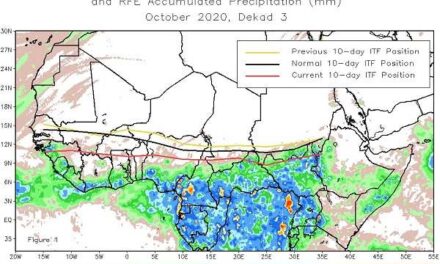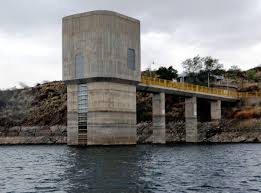
Weather 29 May 2015
 What Happened
What Happened
The week’s synoptic progression is dominated by a combination of two immensely strong vortices straddling the Antarctic circle some 3500 kilometres south-south-west of Cape Town. This combo is so dominant, the two vortices cover an area with a diameter exceeding 3000 km. It has impacted this week’s weather from the beginning of the week to the end and will continue to do so during the weekend.
When such a combination of strong vortices appear they tend to reinforce each other leading to large expanses in the southern seas controlled by strong low pressure systems. Antarctic vortices are known for their strength but since they normally occur in a rather “thin” atmosphere (18,000 feet), their effect is limited mostly to the surface. When they appear in strength further north, their impact in the middle and upper atmospheric levels become more pronounced and they have an effect up to at least 45,000 feet.
The northern perimeter of the low-pressure combo reached right up to the Southern Cape. Situated so far north, it dilutes and depletes the impact of the approaching South Atlantic high pressure cell. This happened textbook-fashion this week. The South Atlantic high was not very strong but it was displaced far to the north. By Wednesday, when it made landfall on the southern Namib coast, its core was more or less in line with Walvis Bay. This indicates that it was almost 2000 km further north than usual.
Meanwhile, on the eastern side, the Southern Indian high pressure cell was in its customary position a few thousand km south of Madagascar. Under normal conditions, this cell would have created the driving engine for the east-to-west circulation over the subcontinent and in Namibia a strong cold would have come from the east. This did not happen.
As the week progressed, the northerly-displaced South Atlantic high moved towards the south as it followed its customary track from west to east crossing south of the continent. But as it encountered the northern fringe of the vortices, it basically collapsed, its cold, dense air spirited away into the upper air by the cyclonic circulation of the vortex combo. By Wednesday a weak high pressure cell was present over the South African highveld, but it warmed up every day leading to a warmer week in general compared to the previous.
The cold front associated with the approaching high pressure cell was also weakened by the effect of the two vortices to its south and it passed the Cape without much local impact.
What’s Coming
By Friday, the Western and Northern Cape suffer some intrusion of colder air from the approaching South Atlantic high. Conditions south of Cape Agulhas remain firmly under low pressure control. While both the South Atlantic high and the Southern Indian high grow in strength as they move slightly southward, the low pressure dominance south of the southern Cape limits the high pressure effect over the interior.
Both Saturday and Sunday will be marked by low pressure conditions over the southern African interior covering most of Namibia, Botswana, Zimbabwe, and the South African interior. This creates a well-marked trough flowing from Angola, across Namibia and Botswana up to the escarpment in the south-east of South Africa.
These conditions will be present from the surface, through the middle layers and into the lower part of the upper atmosphere (below 35,000 feet) Above this level, streamlines will be dominated by the South Atlantic high and the airflow will be south-west so pilots will encounter the seeming anomaly of wind blowing from the north-west below 35,000 feet and from the south-west above that level.
By Monday, the core of the South Atlantic high makes landfall bringing in cold conditions over the southern Namib but the low pressure dominance remains over the interior. This leads to some very interesting interaction with a strong vortex developing over the western Cape by Tuesday. It may bring cloud to Namibia’s south, and there is a very good chance that the western Cape, and even the escarpment at Aus, may see its first snow during Tuesday night.













































